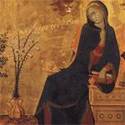
About the Catholica
Previous Posts
Toscana and the Refuges of LightThe Anti-Narnia
Ballad of the White Horse
Red and Black (at the OCP Cafe)
Dvorâk
Polyphonic Bliss
Best. Motet. Ever.
Syndication

News
Seattle CatholicCatholic Exchange
Crunchy Catholicism
Being CatholicCaelum Et Terra
Mystical Rose Herbals
Mary Gardens
Tridentine Tiramisú

St-Martin de Bréthencourt
Chartres Pilgrimage
(muchas fotos!)
Campos Photos
LMSEW Photos
Catholic Artists Today

Official Passion Site
Smallpax Guild
Nicholas Wilton Music
StudiObrien
Via Rosa Rosaries
Regina Doman
Poetry of Pavel Chichikov
Free Literature On the Web

Project Gutenberg
G.K. Chesterton
On Nothing
On Something
First and Last
Europe and the Faith
Belloc - Poetry
More Belloc Poetry
John Henry Newman
Christopher Dawson
Frederico GarcÃa Lorca
Tolkien

Romantic &
Imaginative Theology
Council of Elrond
Anke Eissmann's Art
Angels and Elves
Christianity and Middle Earth
Coulombe Essays
Ardalambion
Gwaith i Pheddain
Arthrand Board
Crazy-Go-Nuts
Homestar RunnerStrindberg & Helium
SuperPope Anime
The Onion Dome
Blogs I Like

Alle Psalite
Andrew Cusack
Angry Twins
Cacciaguida
Church of the Masses
Curt Jester
Dappled Things
Devout Life
Dignare Me Laudare Te
Erik's Rants & Recipes
Flos Carmeli
Give Tongue
Hallowed Ground
The Idyllist
Inn at the End of the World
Jade's Trick
Jelly-Pinched Theatre
Old Oligarch
Open Book
Orthonormal Basis
Sancta Sanctis
Secret Agent Man
Shrine of the Holy Whapping
Video Meliora
Vivid
The Western Confucian
Zadok the Roman
Christendom Blogs
Charlemagne's PalaceThe Christendom Commons
Meet Virginia
Destination: Order
Enchiridion
Fiddleback Fever
JulesArts
Midnight Radio
Nota Bene
¿Qué?
somewhatlost
This Red Rock
West of the Moon
Vestal Morons
Zucchero
<< # St. Blog's Parish ? >>

Archives
- April 2004
- May 2004
- June 2004
- July 2004
- August 2004
- September 2004
- October 2004
- November 2004
- December 2004
- January 2005
- February 2005
- March 2005
- April 2005
- May 2005
- June 2005
- July 2005
- August 2005
- September 2005
- October 2005
- November 2005
- December 2005
- January 2006
- February 2006
- March 2006
- April 2006
- May 2006
- June 2006
- August 2006
- September 2006
- January 2007
- February 2007
- July 2007
Kiss me, I'm Catholic.
Sunday, September 19, 2004
Polyphonic Bliss
(Last Sunday my friends and I went to Mass at Old St. Mary's, and I felt compelled to write about the experience. Unfortunately, the compulsion didn't make me any more punctual than usual... for which I apologize.)
Old St. Mary's is grey and gothic, rising vertiginously between the flat-roofed buildings on either side and making you notice the sky. Inside it is a very straightforward church. There are statues around the back of the church, and votive candles (electric ones, I noticed with a shudder), but there are no side chapels or mysterious recesses. With its slender gothic columns it is like a long straight road with a line of trees on either side. The walls are a pale peach color and the columns are painted to look like colored marble. The ceiling is dark rose over the sanctuary and blue over the nave, and all bound up with white gothic tracery. The sanctuary itself is an "inexplicable splendor" of white and gold - the intricately carved marble altar rail, the mosaic floor, the tiered steps running up to the high altar and aspiring reredos. It's an ideal setting for the traditional Roman rite.
We had gotten lost in the city and so we arrived late, and we came in crestfallen at the beginning of the Epistle. I had been to Old St. Mary's once before, for a Sunday morning Low Mass. The windows had looked dark and watery, as portholes in the nave - the navis, the ship - still washed in the ebbing tide of night. Dim blue light beaded in the aisles like a chilly dew.
But now the windows were glowing saffron with the light of the setting sun, their saints crowding forward, suddenly imposing in their startling brightness. The church was warmer and all its colors were quickened. The Solemn High Mass was unfolding at the altar. Little by little we lost our shame and disappointment in the wonder of it.
Plainsong came drifting down from the choirloft and we took up the familiar Credo from the Missa de Angelis. After that, the schola gave way and a second choir began a massive chord that sent chills down my spine. Fiat sonus... The ordinary of the Mass (excepting the Credo) was a polyphonic setting by some master of the Renaissance, and there was more of it during the Canon and during Communion. Overwhelming... I came out of Mass blinking back tears.
It seems to me that such music is a figure of God's grace. All I could think after hearing it was "Domine, non sum dignus." That I could hear this music! Music that really was "praying twice." Music so powerful that I couldn't imagine an unbeliever listening to it and wanting to remain apart from the Faith a moment longer, if only for the time that he was in the church. Music that could not be paid for, music requiring no entrance fee, music demanding only our reverence and our inner participation in its supplications. Music that, by soaring over everyday things, gave me an inkling of how much more glorious God must be than everything we know - than even the music itself. That was a Mass to remember...
There are times when I become resigned to the ugliness of rap thudding down the street, to bleak concrete buildings, to crudeness of imagination and stinginess in ceremony. I become embarassed at expecting anything better. And then this beautiful polyphony, so generous, so full of richness and dignity. It cheered me to think that this music wasn't outmoded by the passage of time, that it wasn't denied even to deracinated moderns like myself. It seemed to say to us, "You are not doomed to be children of your age. You are not estranged from your ancestors. You are one with your fellow Christians throughout time. Your lives have the same eternal significance, the same weight. The world is more wonderful and dangerous than you know, and God is greater than all of it." Oh, we say we believe all that, but the music makes you feel it in your bones.
Chant and Renaissance polyphony. I know that the world of liturgical music is wider than those two staples, but I could live on that stuff for the rest of my life...
|
Old St. Mary's is grey and gothic, rising vertiginously between the flat-roofed buildings on either side and making you notice the sky. Inside it is a very straightforward church. There are statues around the back of the church, and votive candles (electric ones, I noticed with a shudder), but there are no side chapels or mysterious recesses. With its slender gothic columns it is like a long straight road with a line of trees on either side. The walls are a pale peach color and the columns are painted to look like colored marble. The ceiling is dark rose over the sanctuary and blue over the nave, and all bound up with white gothic tracery. The sanctuary itself is an "inexplicable splendor" of white and gold - the intricately carved marble altar rail, the mosaic floor, the tiered steps running up to the high altar and aspiring reredos. It's an ideal setting for the traditional Roman rite.
***
We had gotten lost in the city and so we arrived late, and we came in crestfallen at the beginning of the Epistle. I had been to Old St. Mary's once before, for a Sunday morning Low Mass. The windows had looked dark and watery, as portholes in the nave - the navis, the ship - still washed in the ebbing tide of night. Dim blue light beaded in the aisles like a chilly dew.
But now the windows were glowing saffron with the light of the setting sun, their saints crowding forward, suddenly imposing in their startling brightness. The church was warmer and all its colors were quickened. The Solemn High Mass was unfolding at the altar. Little by little we lost our shame and disappointment in the wonder of it.
Plainsong came drifting down from the choirloft and we took up the familiar Credo from the Missa de Angelis. After that, the schola gave way and a second choir began a massive chord that sent chills down my spine. Fiat sonus... The ordinary of the Mass (excepting the Credo) was a polyphonic setting by some master of the Renaissance, and there was more of it during the Canon and during Communion. Overwhelming... I came out of Mass blinking back tears.
It seems to me that such music is a figure of God's grace. All I could think after hearing it was "Domine, non sum dignus." That I could hear this music! Music that really was "praying twice." Music so powerful that I couldn't imagine an unbeliever listening to it and wanting to remain apart from the Faith a moment longer, if only for the time that he was in the church. Music that could not be paid for, music requiring no entrance fee, music demanding only our reverence and our inner participation in its supplications. Music that, by soaring over everyday things, gave me an inkling of how much more glorious God must be than everything we know - than even the music itself. That was a Mass to remember...
There are times when I become resigned to the ugliness of rap thudding down the street, to bleak concrete buildings, to crudeness of imagination and stinginess in ceremony. I become embarassed at expecting anything better. And then this beautiful polyphony, so generous, so full of richness and dignity. It cheered me to think that this music wasn't outmoded by the passage of time, that it wasn't denied even to deracinated moderns like myself. It seemed to say to us, "You are not doomed to be children of your age. You are not estranged from your ancestors. You are one with your fellow Christians throughout time. Your lives have the same eternal significance, the same weight. The world is more wonderful and dangerous than you know, and God is greater than all of it." Oh, we say we believe all that, but the music makes you feel it in your bones.
Chant and Renaissance polyphony. I know that the world of liturgical music is wider than those two staples, but I could live on that stuff for the rest of my life...

